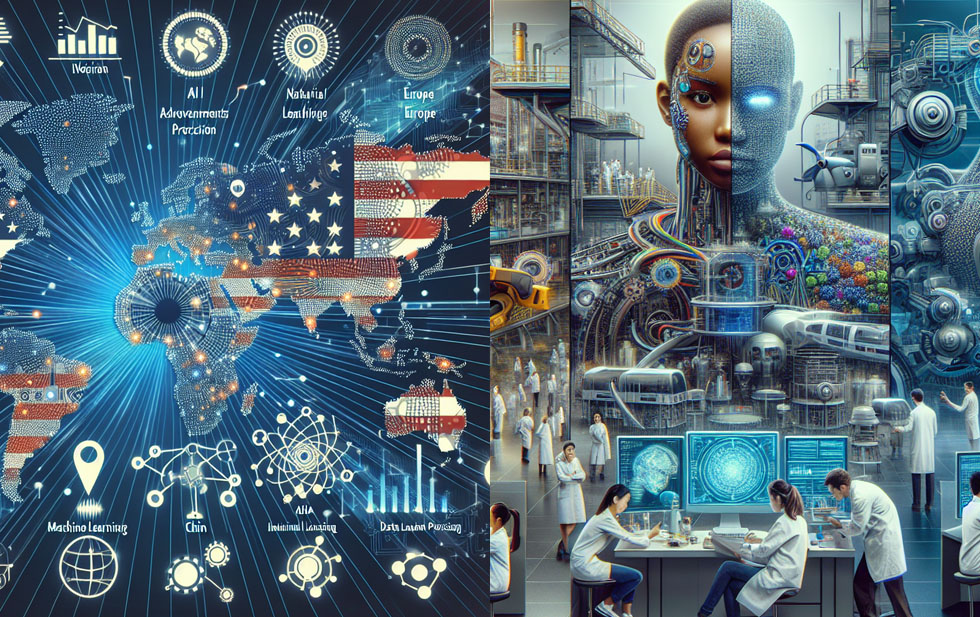Our future Business and Innovation Environment
Our future Business and Innovation Environment
As a business leader and decision maker, it’s vital to remain well-informed about alternative futures. Our new Scenarios service makes it quick and easy for you to explore topics of importance to you and your organization.
21 October 2024
BACK TO BLOGS

Some of the benefits from quickly generating different trends-based scenarios are:
-
discovering new, possibly critical aspects of the future
-
recognizing patterns within alternate futures
-
informing analysis and discussions amongst decision makers
-
inspiring innovation to match strong signals
To illustrate this here’s an example I created in a couple of minutes.
Let’s say that you’re interested in understanding the future aspects of:
AI innovation in the USA and China compared to AI innovation in Europe
You simply perform a horizon scan and then initiate the Scenarios service with a single click.
With the aid of two sliders:
- Mood (Fearful - Hopeful)
- Timeframe (2025 - 2065)
You quickly generate scenarios for a greater understanding of possible futures that could influence your decision making. Additionally, each scenario comes with a strategic follow-up question to help you dig deeper.
Here’s an example:
Scan: AI innovation in the USA and China vs. AI innovation in Europe
Timeframe: 2035
Scenario 1:
- Mood: Fearful
Scenario 2:
- Mood: Hopeful
- Fearful Scenario
Disparities in AI Capabilities by 2035
In 2035, an underlying apprehension surfaces as global disparities in AI capabilities grow more pronounced. This stems from the differential paces at which regions like the EU, U.S., and China are developing and implementing AI technologies. While the EU's recently approved AI Act is laudable for its structured approach towards integrating AI within industries like food manufacturing, it also potentially stifles rapid innovation—risking lagging behind the rapid advancements seen in the U.S. and China.
With China expected to possibly overtake the U.S. in AI R&D by 2025, supported by aggressive educational initiatives and substantial government funding, a major concern is whether Western nations can keep pace without compromising their regulatory standards. The competitive divide could lead to geopolitical tensions as nations vie for technological supremacy, and those falling behind might find themselves dependent on AI technologies developed elsewhere, thus impacting national security and economic autonomy.
The U.S. continues to witness significant investment in AI, projected to reach a crucial tipping point by 2025. Nonetheless, these advancements are not uniformly distributed globally, prompting doubts about whether future technologies will exacerbate economic and technological divides. There's a fear that nations struggling to catch up may experience stunted growth and diminished influence on the global stage—potentially reshaping international power structures in unforeseen ways.
Follow-up Question:
How can regions struggling to keep up in AI development mitigate the risk of falling behind more technologically advanced regions?
Hopeful Scenario
The Future of AI Regulation and Development in 2035
In 2035, the landscape of AI regulation and technological innovation is likely to be defined by the critical policy decisions of the early 2020s. The European Union, maintaining its regulatory framework established by the AI Act, strives to strike a balance between fostering innovation and ensuring ethical considerations are taken into account. However, these efforts continue to weigh on its competitive edge on the global stage, particularly against the United States and China, who have advanced significantly in AI technologies. The EU's ongoing challenge will be how to leverage its regulatory expertise while fostering home-grown innovation to avoid technological dependency.
China, bolstered by state support and vast datasets, has maintained its assertive stance in AI development, possibly having surpassed the US capabilities by 2035. The Chinese approach has been characterized by international partnerships beyond the US, creating a diverse AI ecosystem that is as interconnected as it is state-driven. China's influence in global AI policy is notable, though tempered by geopolitical tensions and differing strategic interests with other nations.
The United States continues to be a leader in technological innovations, leveraging its extensive data centers and resources to push forward a sustainable AI agenda. Despite facing initial setbacks from international export restrictions, the US has pivoted towards creating proprietary models and strategic alliances to maintain its dominance. A key factor in its success lies in rallying international cooperation for AI governance, with an emphasis on safety and ethical standards. The US, in collaboration with like-minded nations, is poised to spearhead initiatives on global AI policy frameworks, ensuring a consolidated front against potential misuse while promoting innovation.
The tri-polar dynamic between the EU, US, and China in AI development and regulation underlines the complexities of balancing innovation with ethical governance. As AI continues to evolve, the world is tasked with navigating these intricate relationships while striving for a sustainable, ethically sound technological future.
Follow-up Question:
How might different regulatory approaches impact AI development globally by 2035?
Creating both these scenarios took less than 2 minutes.
If you would like to try this out yourself, just reply to this email. We’d love to hear what you think.
Stay curious,
Matthew Richardson
CEO, Shaping Tomorrow
